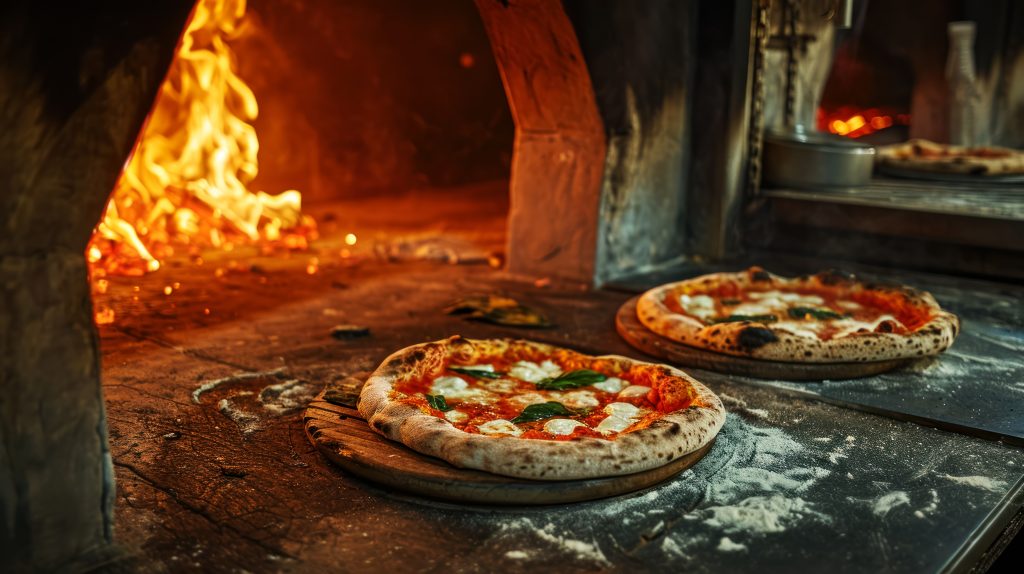
Pizza as we know it today—saucy, cheesy, and endlessly customizable—has come a long way from its humble beginnings. While we often credit Italy as the birthplace of pizza, its roots stretch much further back through history, across continents and cultures.
This is the story of how pizza evolved from simple flatbreads to a global culinary icon.
Ancient Origins: The First Flatbreads
Long before mozzarella met tomato sauce, early civilizations were already baking variations of pizza. Ancient Egyptians, Persians, and Greeks all had their own versions of flatbreads topped with herbs, oils, and local ingredients.
- Persian soldiers baked flatbread with cheese and dates on their shields.
- Greek lagana was topped with olive oil and garlic—similar to today’s focaccia.
- Roman “panis focacius” was a flat, hearth-baked bread topped with cheese and honey.
These weren’t called “pizza” yet, but the idea—bread as a base for toppings—was clearly taking shape.
18th Century Naples: Birthplace of the Modern Pizza
Pizza in its modern form began in Naples, Italy, in the late 1700s, when the city’s poor began topping flatbread with readily available ingredients like tomatoes (once believed to be poisonous), garlic, oil, anchovies, and basil.
Street vendors sold these portable meals to workers and the poor. It was a food born out of necessity, affordability, and flavor.
The Margherita Legend
In 1889, King Umberto I and Queen Margherita of Savoy visited Naples. Legend has it that pizzaiolo Raffaele Esposito created a special pizza in her honor—topped with tomatoes (red), mozzarella (white), and basil (green)—representing the Italian flag.
This pie was named Pizza Margherita, and while the story may be partly myth, the pizza became an enduring national symbol.
Spreading Beyond Italy: Pizza Immigrates to the World
By the late 19th and early 20th centuries, Italian immigrants brought pizza to the United States, especially to cities like New York, Chicago, and Philadelphia.
- The first documented pizzeria in the U.S. was Lombardi’s, opened in 1905 in New York City.
- As Italians settled into American life, their traditions—including pizza—began to influence local cuisine.
After World War II, returning soldiers who had tasted pizza in Italy craved it at home, accelerating its popularity across the U.S.
Regional Styles Emerge
As pizza spread, local twists were added:
- New York-style: Large, foldable slices with a thin crust.
- Chicago deep dish: Thick, pie-like layers with the sauce on top.
- California-style: Gourmet toppings like arugula, goat cheese, and smoked salmon.
- Detroit-style: Thick, rectangular, and crispy-edged from caramelized cheese.
Each city and region embraced pizza with its own creative flair.
Pizza’s Global Domination
Today, pizza is one of the most recognized and consumed foods in the world. From Tokyo to Buenos Aires, there are localized versions with unique toppings—like squid ink in Japan or peas and corn in Brazil.
Pizza chains like Domino’s, Papa John’s, and Pizza Hut helped globalize pizza even further, making it accessible in over 100 countries.
Reinvention in the 21st Century
Pizza continues to evolve:
- Gluten-free, vegan, and keto pizzas meet dietary needs.
- Artisan and Neapolitan revivalists bring pizza back to its traditional roots.
- AI-powered pizza ovens and robotic chefs are now part of high-tech kitchens.
- Experimental toppings like sushi, truffle oil, and hot honey keep pushing boundaries.
Pizza is now both a comfort food and a canvas for culinary innovation.

